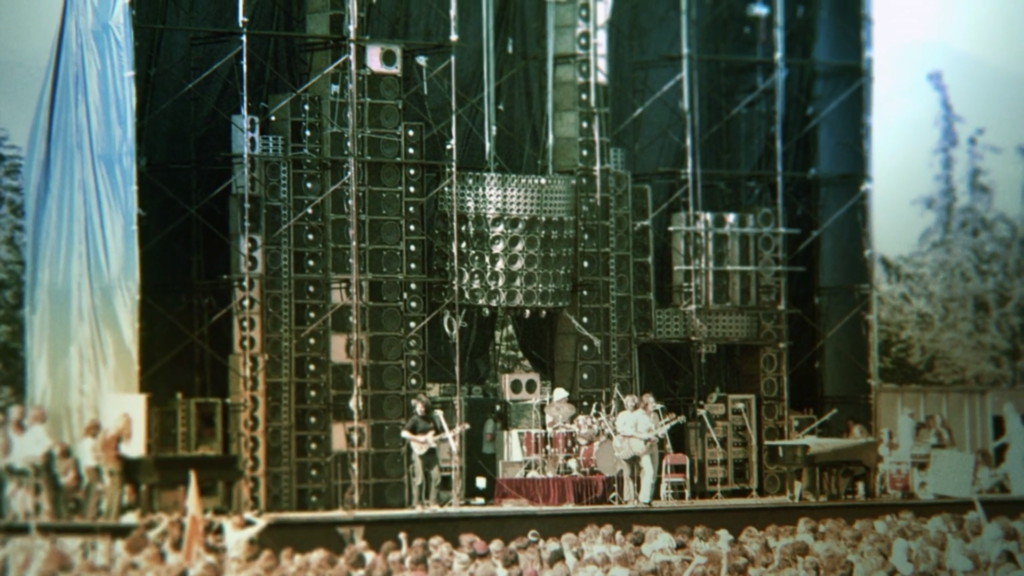Grateful Dead and The Great Wall of Sound: A Sonic Revolution
The Grateful Dead, one of the most iconic and enduring bands to emerge from the 1960s counterculture, were not only known for their eclectic musical style and improvisational prowess but also for their innovative approach to live sound. Central to this innovation was the creation of the “Wall of Sound,” a colossal sound system that revolutionized live concert audio.
Origins of the Wall of Sound
In the early 1970s, the Grateful Dead faced a significant challenge: how to deliver their music with clarity and power to increasingly larger audiences without compromising sound quality. Traditional PA systems of the time were inadequate for their needs, often resulting in distorted and uneven sound. The band, always pushing the boundaries of what was possible, sought a solution that would allow them to reproduce their studio sound with high fidelity in a live setting.
Enter Owsley “Bear” Stanley, the band’s sound engineer and a visionary in his own right. Stanley, along with the band’s audio technician Dan Healy and others, conceptualized and built the Wall of Sound, a behemoth sound system designed to deliver unparalleled audio clarity and volume.
The Structure and Design
The Wall of Sound was unlike anything seen before. It was essentially a massive array of speakers and amplifiers, meticulously arranged to create a powerful and clear sound projection. The system consisted of:
- Over 600 speakers: The array included different speaker types for different frequencies, with separate stacks for bass, midrange, and treble. Each instrument had its own dedicated set of speakers.
- Multiple amplifiers: To drive the vast number of speakers, the system used hundreds of McIntosh 2300 amplifiers, each capable of delivering 300 watts of power.
- Unique speaker arrangement: The speakers were arranged in a vertical and horizontal configuration, creating a literal wall behind the band that stood over three stories tall and spanned nearly 100 feet in width.
Technical Innovations
The Wall of Sound was not just about sheer size; it incorporated several technical innovations that set it apart:
- Quadraphonic sound: Each band member had their own channel in the mix, allowing for a more precise and balanced sound. This also minimized the bleed of sound between microphones, reducing feedback.
- Line array design: The vertical alignment of the speakers helped project sound more evenly across large venues, ensuring that even those in the back rows could hear the music clearly.
- On-stage monitoring: The design allowed the band to hear exactly what the audience was hearing, improving their ability to perform and adjust their sound in real time.
Impact and Legacy
Debuted in 1974, the Wall of Sound was a marvel of engineering and a testament to the Grateful Dead’s commitment to providing the best possible live music experience. It allowed the band to play at higher volumes without distortion and offered unparalleled sound clarity.
However, the system’s complexity and logistical demands proved to be both a blessing and a curse. The sheer size and weight of the Wall of Sound made it difficult to transport and set up, requiring a dedicated crew and significant resources. This eventually led the band to retire the system in 1974 after a relatively short period of use.
Despite its brief lifespan, the Wall of Sound left an indelible mark on the music industry. It set new standards for live sound and inspired future developments in concert audio technology. The principles and innovations pioneered by the Grateful Dead and their team continue to influence sound engineering to this day.
The Great Wall of Sound stands as a symbol of the Grateful Dead’s relentless pursuit of audio perfection and their willingness to push the boundaries of what was possible in live music. It was a bold experiment that, despite its practical challenges, succeeded in creating an unparalleled auditory experience for those fortunate enough to witness it. In doing so, the Grateful Dead not only enhanced their own performances but also advanced the field of live sound engineering, leaving a lasting legacy that continues to resonate throughout the music world.




